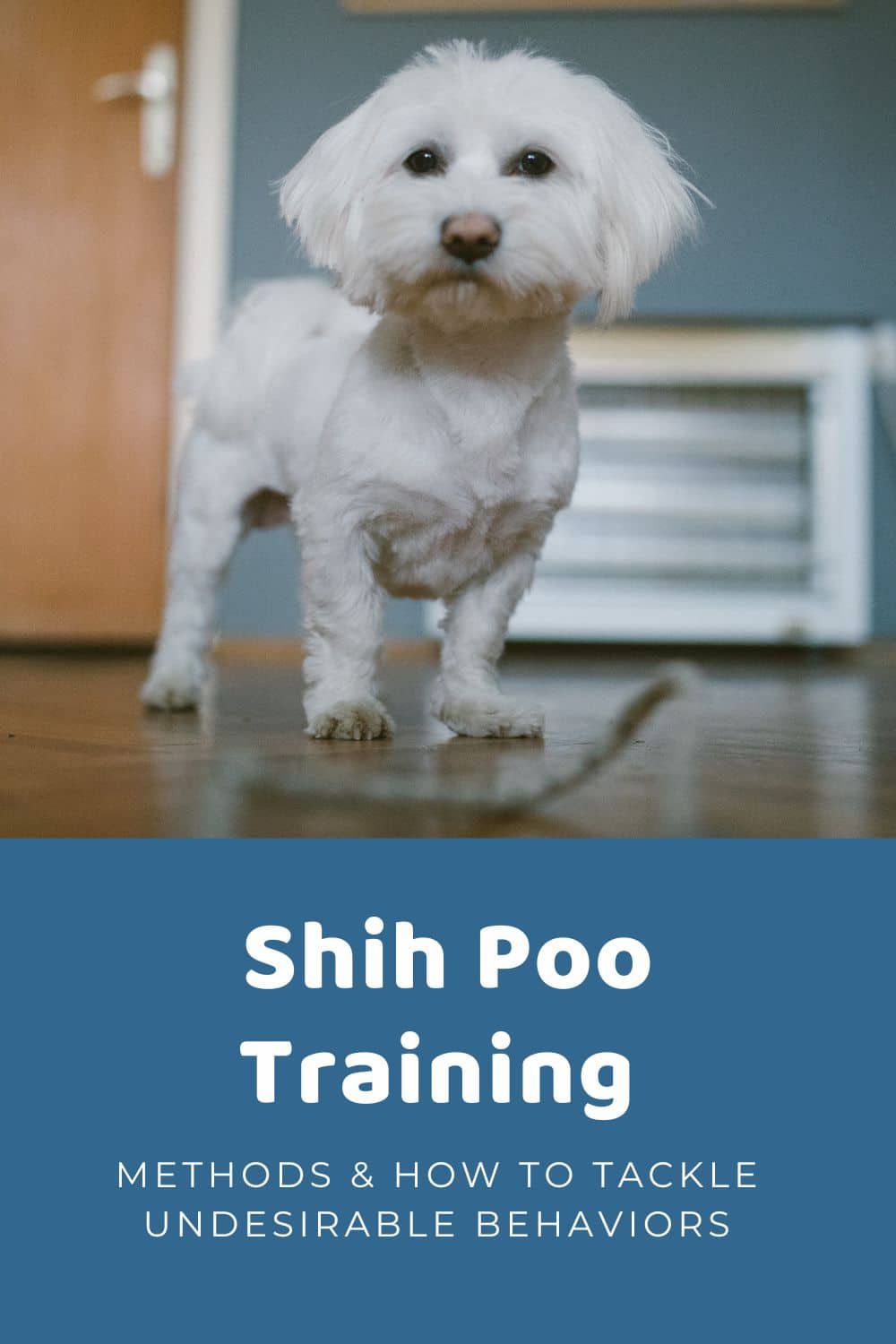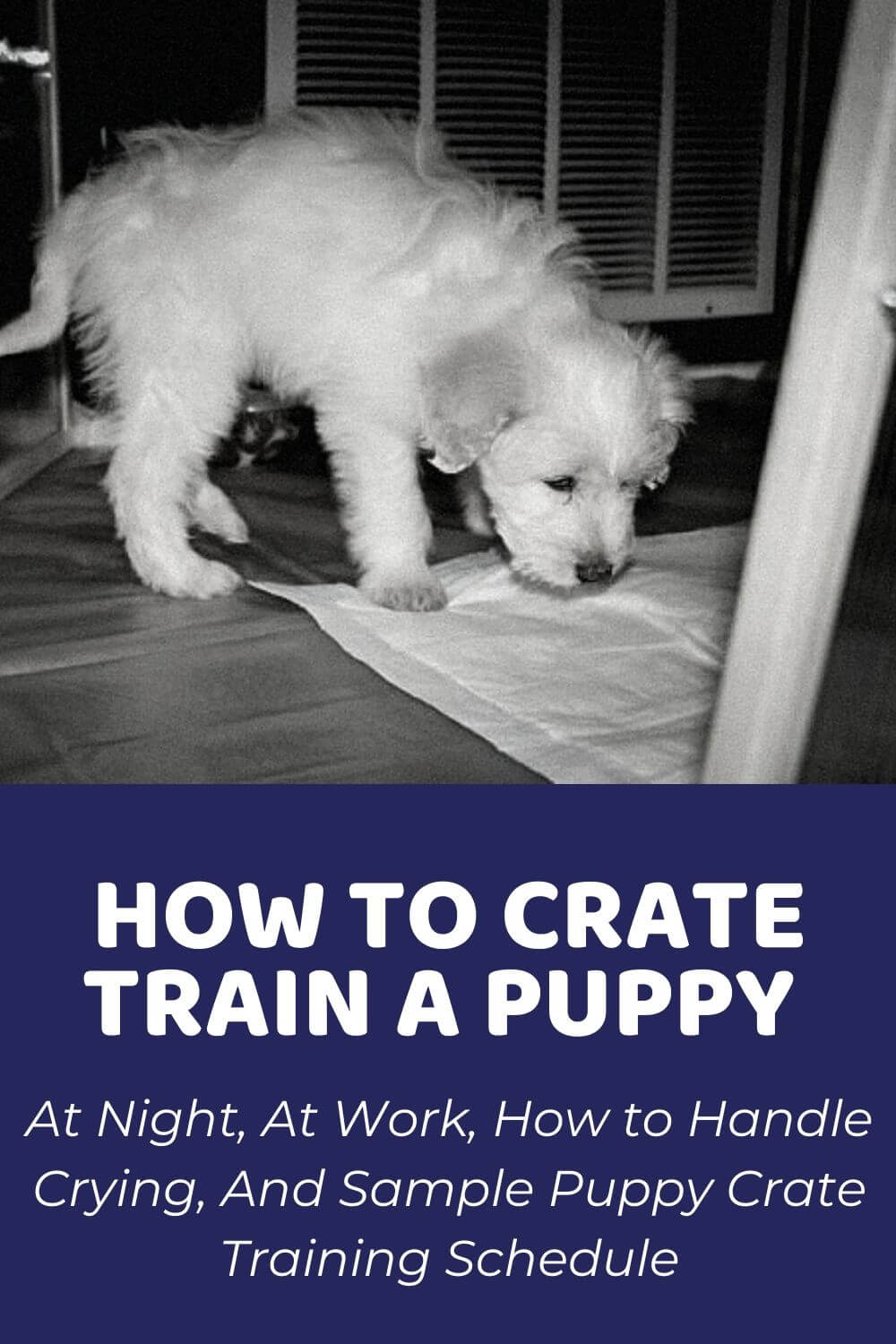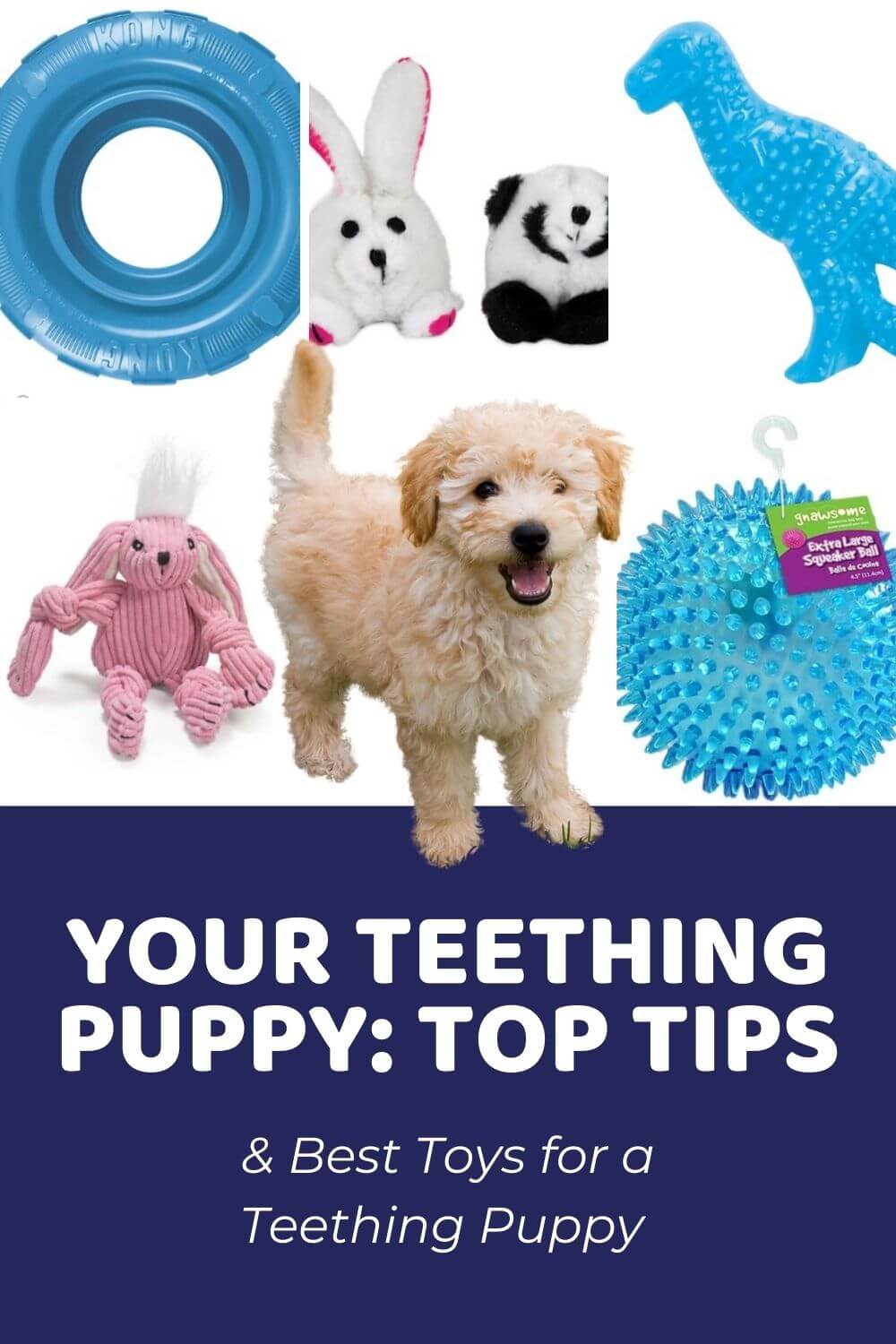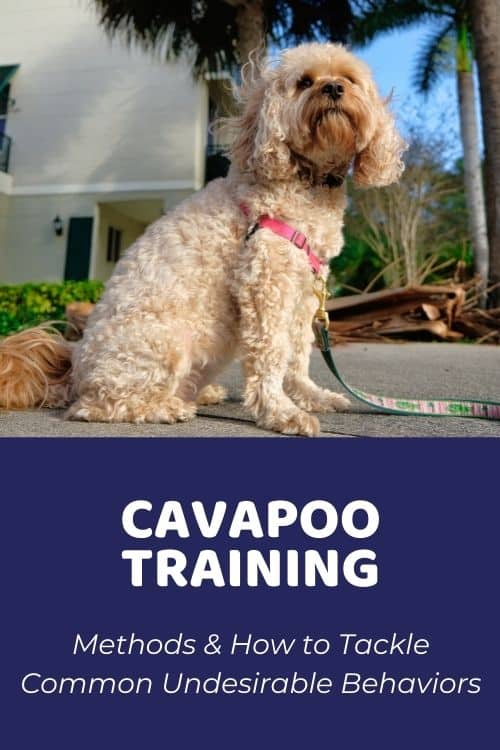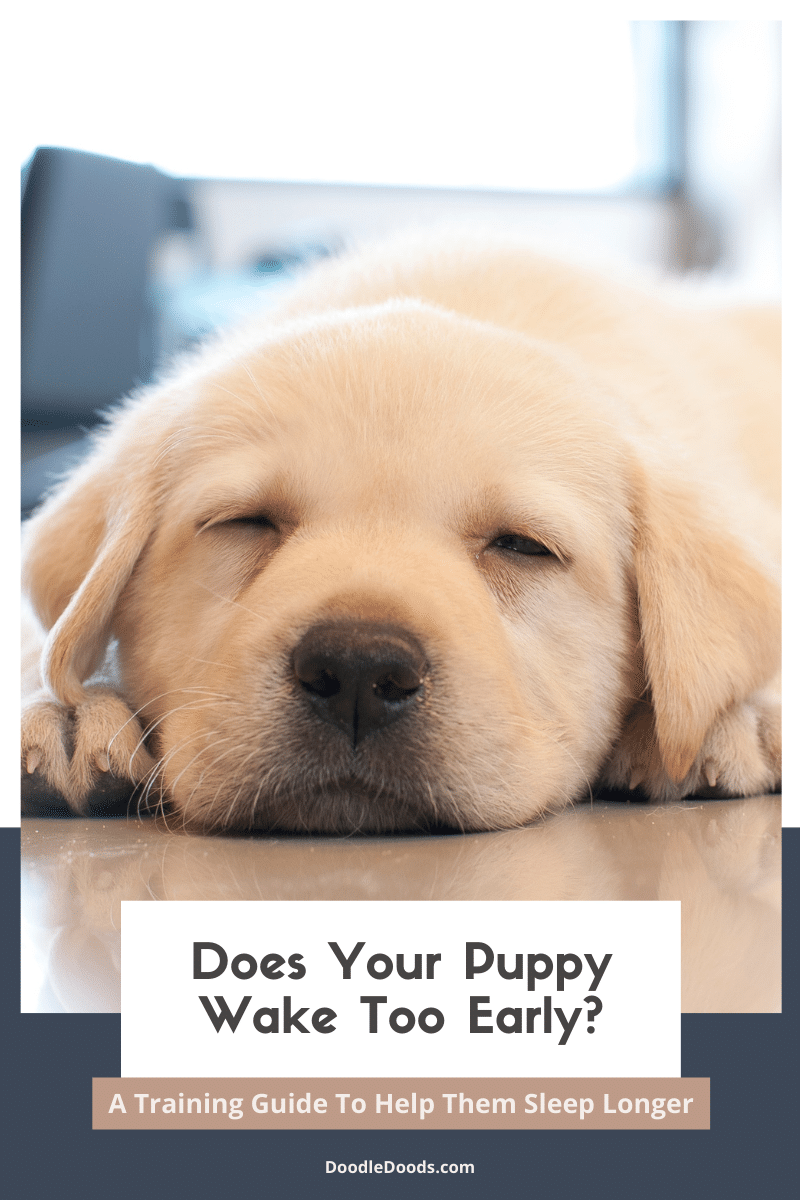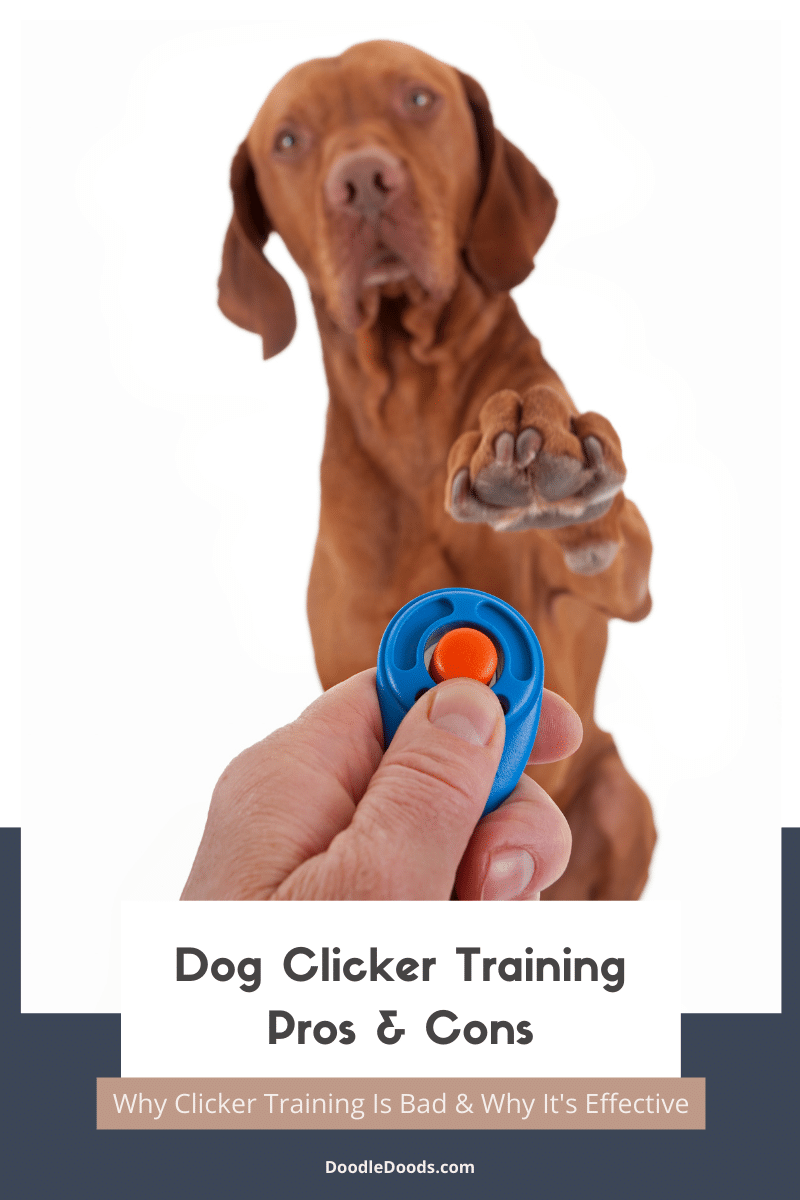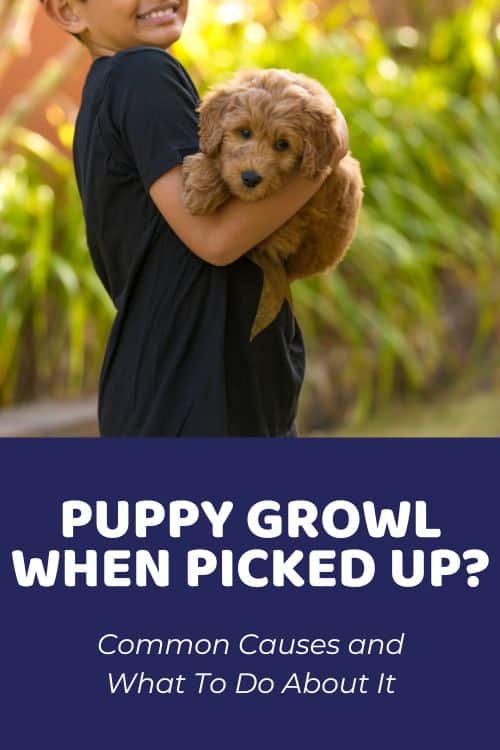If you’ve made it to this article, you’ve probably adopted or are planning to adopt a Shih Poo. Training is a crucial part of any puppy’s upbringing. As a new dog owner, it’s your responsibility to provide your pup a healthy and safe environment with all the necessary tools to grow into a confident and well-rounded adult. Shih Poo training doesn’t have to be difficult, as long as you know what you’re doing.
In this guide, we’ve outlined the best Shih Poo training methods and listed some must-have items for Shih Poo training. We’ll also discuss some of the more common problems that your pup might struggle with.
Table of Contents
- Best Age To Start Training Your Shih Poo Puppy
- Shih Poo Training Sample Routine
- 4 Obedience Training Methods For Your Doodle
- The Training Items You Absolutely Need For Your Shih Poo
- Shih Poo Training: Common Issues & How to Tackle Them
- Need Some Extra Help When Training Your Shih Poo?
- Shih Poo Training Frequently Asked Questions
- Final Thoughts
Learn How to Care for Your Doodle Puppy!

Perfect for first-time Doodle parents, get ALL your questions answered, including questions new Doodle parents don’t even think to ask.
Plus, get $700 worth of Bonus Materials for FREE, including:- Doodle Parenthood Community and Support Group ($190 value)
- Doodle Puppy Growth Tracker ($20 value)
- EMERGENCY Cheatsheet: When To Call The Vet Immediately ($50 value)
- HELP! Button ($145 value)
- And SO MUCH MORE!
Best Age To Start Training Your Shih Poo Puppy
If you’re interested in learning more about Shih Poo training, then you’re already halfway there. Understanding that early socialization and training is key here, as your actions (or inactions) can greatly affect your puppy’s development during those delicate life stages.
So when should you start training your Shih Poo? We recommend you start training your Shih Poo as early as possible. Starting from an early age sets your pup up for success.
Just like children, puppies are like sponges that soak in everything you teach them. Naturally, by establishing good behaviors from an early age, your puppy is much more likely to be well-behaved once they’re an adult.
If you decide to adopt your new puppy from a breeder, you’ll be glad to know that responsible breeders start with Shih Poo training before their puppies are adopted. This usually includes early socialization, potty training, crate training, and basic manners, making your life much easier once you bring your new puppy home.
Nonetheless, don’t expect to get a fully house trained puppy from a breeder. Shih Poo training does take time, so you’ll have to continue with your puppy’s training routine and schedule even after adoption. After all, they’re still growing, they need some guidance!
But how to train a Shih Poo? Here are two of the most important things to keep in mind:
Establish A Routine
The key to Shih Poo training lies in a good routine. Puppies and dogs thrive on scheduled mealtimes, bedtimes, and anything in between. We recommend you establish a proper routine and stick to it. Schedule in mealtimes, naps, bedtime, potty breaks, and so on.
Consistently following a schedule provides your pup some structure, which attributes to their sense of security and helps build confidence. It’s also crucial for housetraining, as mealtimes should be followed by potty breaks. You see how it all works out, right?
A good tip is to schedule your puppy’s mealtimes around your own breakfast, lunch, and dinner. Also, if you have other family members in the household, all of you should follow the same routine when handling the puppy.
Socialize Your Puppy
Shih Poo training is just one part of the equation. Although good manners and bathroom habits are vital, you’ll also want to pay attention to your puppy’s emotional development. Shih Poos are affectionate and social by nature, so teaching them how to interact with people and other animals is going to help them thrive in social situations and become well-adjusted in all sorts of situations.
Before you take your puppy to the local dog park, make sure that they’re fully-vaccinated and have the green light from your vet.
Shih Poo Training Sample Routine
Although quite an undertaking, Shih Poo training does not have to be hard. In fact, you can make it very simple and sustainable for both you and your puppy if you establish a routine and stick to it. Here are some helpful tips along with a sample Shih Poo training schedule:
Tip #1
Potty time right after waking up. Puppies usually need to go first thing in the morning after waking up, so to avoid any accidents be sure to provide your pup the opportunity.
Tip #2
Schedule in your puppy’s mealtimes. A great tip for that is to schedule your puppy’s mealtimes around the same time you have breakfast, lunch, and dinner. It’s also a great time to socialize with the family!
Tip #3
Potty breaks after meals. Puppies usually have to go potty around 30 to 60 minutes after each meal. If you’re still in the process of housetraining your pup, you can take them out every hour to avoid any accidents.
Tip #4
After potty breaks, it’s time for some exercise. After your pup has finished its meal and gone potty, take them out for a little walk or some playtime.
Tip #5
Potty breaks after exercising. Puppies usually need to go potty after exercising as well.
Tip #6
Naptime. After the usual eat-potty-play routine your puppy will likely be tired and in dire need for a snooze. Did you know that puppies sleep around 16 to 18 hours a day? Let them rest and recharge!
Tip #7
Potty break after waking up. Needless to say, it’s time for another potty break once your puppy wakes up from its nap.
Tip #8
Go to bed at the same time every day. One of the best ways for establishing a good routine is by sticking to the same bedtime schedule every single day. Of course, don’t forget to take your puppy out for another potty break before bedtime.
Tip #9
Consider your puppy’s age. For instance, puppies that are 8-12 weeks old need to eat smaller portions and more frequent meals throughout the day. Keep in mind that this also means that they need to go potty more often.
Here’s our sample Shih Poo training routine that could work for you and your pup:
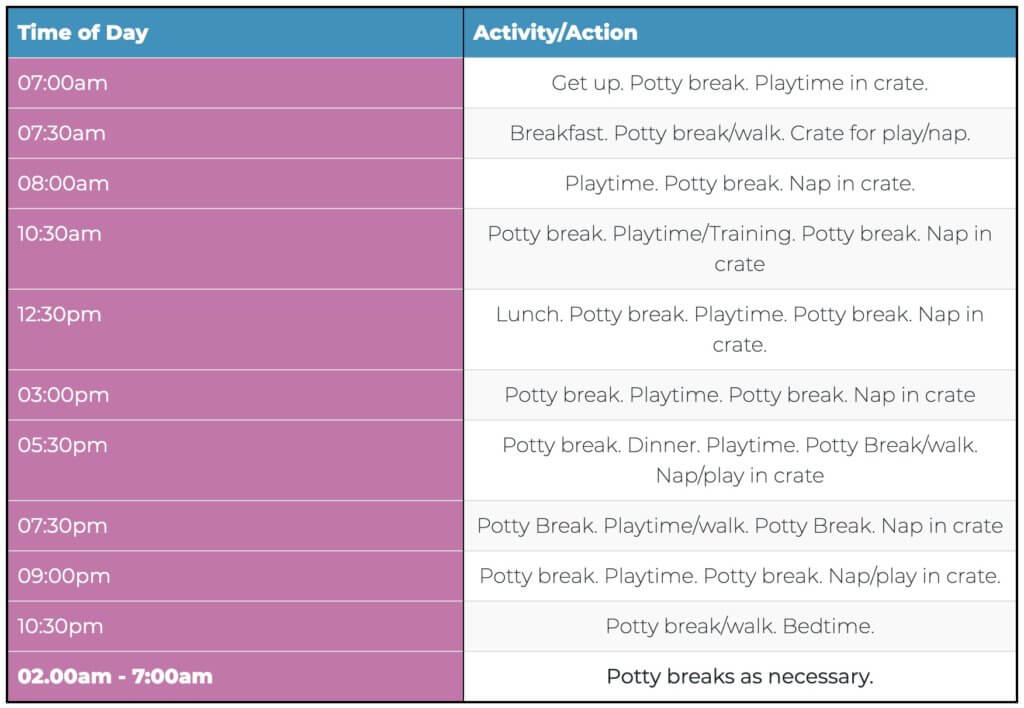
4 Obedience Training Methods For Your Doodle
So, what is the best way to train a Shih poo puppy? Obviously, what works for one pup might not work for another. Luckily, there are a few different Shih Poo training methods that you can try. Here are some of the best ones we vouch for:
Positive Reinforcement
When it comes to Shih Poo training, positive reinforcement training is key. In fact, all puppies should be brought up only with positive reinforcement, as this teaches positive associations. As you can imagine, you won’t get far by punishing or scolding your puppy. Especially if they’re just learning how to handle all sorts of situations in this world.
Positive reinforcement training means that you reward your puppy for good behaviors and completed tasks, whereas you just ignore unwanted behaviors and reactions. By rewarding their good behaviors, you’ll teach your puppy to continue behaving in a certain way. You can reward your puppy with either praise, food, or toys, whatever you and your puppy prefer.
The only acceptable form of punishment is to remove your puppy’s favorite treat or toy. Never raise your voice, behave or talk in an aggressive tone, or otherwise punish your puppy for misbehaving.
Clicker Training
Clicker training is a very common Shih Poo training method that’s preferred by dog trainers and breeders. It’s basically a form of positive reinforcement training.
With clicker training, you’ll use a clicker every time after your puppy has successfully completed a task or behaved well. After using the clicker, you’ll reward their good behavior either with treats or praise. This teaches your puppy to associate the clicking sound with future reward.
An easy way to start with the clicker training method is by encouraging your puppy to complete a task that they’re already familiar with. When your puppy has completed the task, click the clicker and then feed them a treat. Once your pup has gotten a hang of it, you can move onto new and more advanced commands.
Crate Training
Definitely one of the most popular Shih Poo training methods is crate training, and for a good reason, too. Crate training massively helps with house training, and it’s also excellent for building your puppy’s confidence.
With the crate training method, you’ll want to teach your puppy that their crate is their very own, private safe haven, where they can relax, rest, and recharge in. Make it cozy with a cushy dog bed and soft blankets, you can even place some toys in there.
Crating your puppy also helps you establish a good bedtime routine, and teaches your puppy how to enjoy spending time on their own. You’ll also be able to help prevent destructive behaviors, such as chewing on your house decor or going potty inside the house. But, never use the crate as a form of punishment!
You should never keep your puppy confined in its crate for too long, and remember to provide plenty of opportunities to go potty. As a general guideline, puppies can only stay in crates in the hours equal to their age in months. For example, if your puppy is three months old, you can leave them in the crate for up to three hours at a time.
Mirror Training
Mirror training combines positive reinforcement and clicker training methods with setting an example for your pup. With the mirror training technique, you’ll teach your puppy how to follow your lead and mimic what you’re doing. After all, dogs are pack animals, so this method makes perfect sense.
Mirror training is an excellent technique for breeds that tend to form strong bonds with their owners, such as the Shih Poo. Of course, mirror training only works if you have a close bond with your pup so that they’re eager to please you. Like we mentioned earlier, socialization plays a huge role in Shih Poo training.
Moreover, as your puppy will be learning new behaviors by following your lead, it’s crucial that you don’t send any conflicting signals with your own actions and reactions.
The Training Items You Absolutely Need For Your Shih Poo
Although training your Shih Poo doesn’t require specific equipment per se, there are still some items you want to have at hand that make the whole training process much easier.
With the Shih Poo training methods we mentioned above, you’ll be needing either tasty treats or dog toys as rewards for good behavior.
PS! Keep an eye on your puppy’s food intake and make sure you don’t overfeed them, as weight problems are common in Shih Poos.
For outside training and safe walkies, you’ll be needing a collar and a leash. Then there are the obvious – poop bags, food bowls, water bowls, and a dog bed. If you decide to crate train your Shih Poo, you’ll also need a crate along with its furnishings.
Shih Poo Training: Common Issues & How to Tackle Them
Thanks to their Poodle heritage, Shih Poos are intelligent little Doods that are eager to please their humans. They respond well to positive reinforcement training, provided that you’re consistent and set a good example.
On the other hand, Shih Poos may inherit a stubborn streak from their Shih Tzu parents. This means that training may take some additional time. Some of the most common issues that Shih Poo owners encounter include the following:
Counter Surfing & Stealing Food
Dogs love to munch on anything and everything they encounter. Needless to say, the Shih Poo is no different, and it’s not uncommon for these pups to be tempted when they see something tasty lying around.
The solution for that problem is simple – keep your kitchen counters clean and don’t leave any food out after you’ve finished preparing your meals.
In addition to that, you’ll want to teach your puppy basic commands like ‘sit’ and ‘leave it’ and utilize positive reinforcement training so that they’ll learn to ignore the temptation. Also, don’t send any mixed signals by feeding your pup your table scraps.
Jumping
Although Shih Poos can’t do much damage when jumping up on people, it’s still not the most appropriate behavior in dogs. Early socialization lets you teach your puppy how to behave and interact with people and other animals in an appropriate way. Basic commands like ‘down’ can also be helpful here to prevent your puppy from jumping up on people.
If your puppy does have a habit of jumping on you when you get home, the best course of action would be to simply ignore it and if necessary remove yourself from the situation. This teaches your puppy that they won’t be getting any attention or praise for this type of behavior. Of course, don’t forget to reward good behaviors to enforce new habits.
Barking
Shih Poos generally aren’t very vocal dogs, as long as they’ve been socialized properly. In addition to that, some Shih Poos may become vocal if they’re not mentally and physically stimulated enough. For this reason, daily exercise, playtime, and mind stimulating activities are vital. Excessive barking can also indicate that your puppy is struggling with separation anxiety, a common problem in Shih Poos.
Some Shih Poos may also start barking when someone’s at the door or passing by the window. In case of people coming over, you want to teach your puppy the appropriate way to behave when someone’s at the door. Having a designated spot for your pup to sit while guests come over would be helpful. Again, reward your puppy for behaving well.
Leash Pulling
Puppies love to pull on the leash. Unfortunately, that can make your Shih Poo’s daily walkies quite annoying for you. On the flip side, Shih Poos are so small that they won’t exactly manage to pull you to the opposite direction.
Dogs usually start pulling on the leash because they’re simply so excited to go outside and explore. If your pup continuously keeps pulling the leash, stop walking. Once your puppy stops pulling, you can start walking again. Do this continuously and your puppy soon learns good leash walking manners.
Digging
Digging is oftentimes a symptom of either boredom, lack of stimulation, or anxiety. The best way to keep destructive behaviors at bay is by keeping your puppy both mentally and physically stimulated. Make sure you Shih Poo gets to go on its daily walkies, and you might also want to invest in some puzzle toys and activity boards to keep your pup entertained.
If the digging is a persistent issue, covering up your pup’s favorite digging spots could help. A tried and true method is placing dog poop where your dog has already started digging. Some owners also provide their pups a designated digging spot to keep the rest of the garden looking pristine.
Biting & Mouthing
It’s completely normal for puppies to nip and chew on pretty much anything. Toys, pillows, your hand – everything goes. Once puppies are teething, the chewing never seems to stop. If you won’t redirect your puppy’s focus onto appropriate chew toys, you’ll soon have a problem.
Inappropriate biting may indicate that your puppy is bored, or that you’ve taught them that this type of behavior will get them your attention. Adult and elderly Shih Poos may bite out of fear, pain, anxiety, or stress. If you suspect any of those problems, make sure to consult with your veterinarian about the possible solution.
Eating Socks & Non-Food Items
Dogs eat non-food items mainly for entertainment purposes. For some weird reason, dogs particularly love to munch on socks. Although it sounds harmless and even funny, it could actually lead to very serious health complications, such as intestinal blockage.
A simple solution for this problem is to keep any non-food items away from your Dood’s reach to avoid any medical emergencies. Instead, get your pup some exciting chew toys, but make sure that they don’t look like the items that you don’t want your dog to chew (shoes, for instance).
Potty Training
When it comes to Shih Poo potty training, you’ll be glad to hear that this process usually goes smoothly for most puppies. If you’re adopting your Shih Poo from a reputable breeder, chances are that they’ve already started potty training their pups from an early age. Many dog owners prefer to crate train their puppy, as it also helps with house training.
Once you bring your new puppy home, it’s crucial that you continue with the training immediately. Introduce your puppy to its designated bathroom spot and take them there for every potty break.
Make sure you praise your pup for going potty to the right place, and never punish them for any accidents. It’s completely normal for puppies to have accidents when they’re still house training.
Need Some Extra Help When Training Your Shih Poo?
Although you can certainly raise a well-rounded and well-behaved pup on your own, professional guidance could help you tackle behavioral problems, such as excessive barking, destructive chewing, or leash pulling.
You could either hire a professional dog trainer or you could subscribe to Baxter & Bella’s Online Puppy School that teaches you how to successfully raise your puppy into a well-behaved dog from the comfort of your own home.
Need help with training?
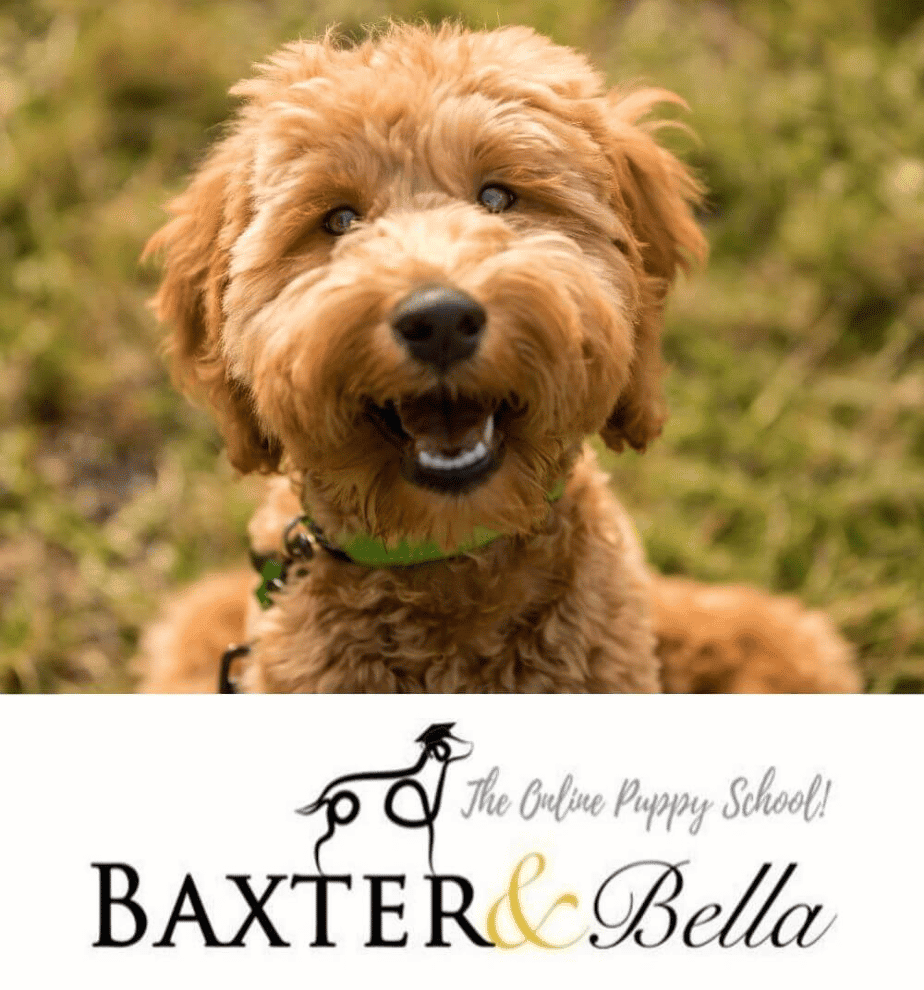
Use our discount code: DOODLEDOODS at checkout for an instant 25% off of BAXTER & BELLA, The Online Puppy School – an incredible value on their lifetime membership!
Learn More About BAXTER & BELLAShih Poo Training Frequently Asked Questions
When it comes to training a Shih Poo, these pups are generally considered easy to train. Thanks to their Poodle heritage, they’re rather intelligent little Doods that have no problem learning new tricks. On the other hand, some Shih Poos may inherit the Shih Tzu parent’s stubborn streak, which could make training slightly trickier.
How to train a Shih Poo? There are various Shih Poo training methods that you could try, all of them focusing on positive reinforcement, which means that you’ll be rewarding good behavior whilst ignoring undesired behaviors. Shih Poos usually respond well to positive reinforcement training, especially if it’s paired with a daily routine that you consistently follow.
Unwanted behaviors should be ignored, and you should never resort to any types of punishments. Keep in mind that you’re still in the process of training your puppy, and they’re bound to misbehave from time to time. However, if your dog keeps misbehaving, you can remove their usual reward from the situation.
Final Thoughts
We hope you’ve found our step-by-step guide to Shih Poo training helpful. Remember, the key to a well-behaved dog is consistency and patience. Be sure to reward your pup with lots of praise and treats when they behave well, and don’t forget to have fun in the process. Training a Shih Poo can seem like a daunting task at first, but it can actually be a nice bonding experience for both you and your pup.

